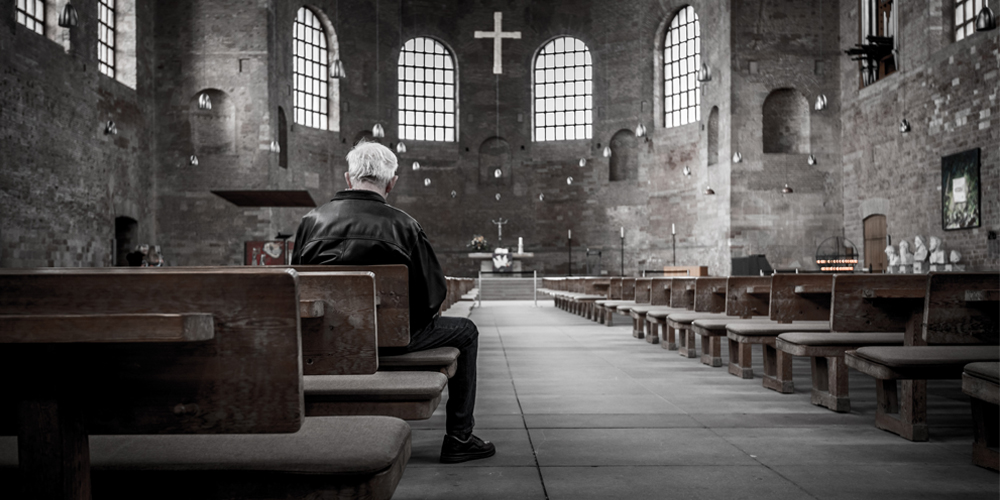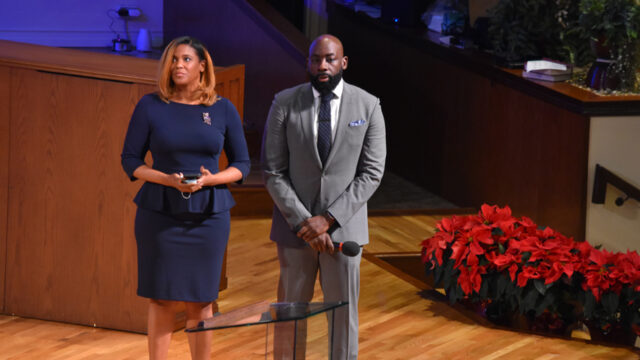Every local church should be a haven of connection.

Recently, my wife and I got hooked on a TV show. We’d wait in anticipation for the latest episode each week. The show? Old people’s home for four-year-olds. The premise? Take a class of cheeky, energetic, curious, filter-less four-year-olds and have them spend a significant amount of time with the elderly residents of a nursing home — some of whom also lacked a filter.
On the surface, it was cute, wholesome reality television, with plenty of laughs and a few tears.
But as the show’s script kept reminding us, the importance of this “experiment” went deeper than just entertainment. The show claims that 40 percent of older adults don’t receive any visitors. Up to 80 percent of the elderly participants tested high on the scale for geriatric depression, loneliness, and limited mobility.
During the show, we witnessed the older people coming out of their comfort zones, trying new things, and forming lasting friendships with the little people. Interacting with the young folk created measurable improvements for nursing home residents, both in mental health and mood, as well as in fitness levels. There were also demonstrable benefits for the young people, who improved their confidence, social skills, and vocabulary.
It seems intergenerational mingling is beneficial in several ways. It’s not just elderly people who are suffering from isolation and loneliness these days. Add mental health challenges into the mix, and many of us are suffering from disconnection and disillusionment.
Yet, in our western world, where it is quite common to move to another city for work — disconnecting from family and friends — many of us lack meaningful relationships and intergenerational ties outside of our own nuclear family. Shifting cultural values, personal entertainment systems meaning less need for social interaction, high-density living, and disconnection from meaningful relationships have left us feeling hopeless. The relationships we do have often don’t meet our expectations or are fleeting and shallow.
It turns out one solution to our emptiness epidemic is an oldie but a goodie. Church.
Church, as understood by early Christians and the biblical authors, is a group of people coming under Jesus’ Lordship. Church cannot be experienced in isolation, but it can be a haven of connection for the isolated. We are called to be the church. Us, people, not bricks and mortar but blood and bone.
There was a time in my life, not too long ago, when I discovered firsthand the benefits of connection and support that being the church can provide. I was struggling to hold everything together. The weight of juggling competing responsibilities at work and home, while trying to support my wife, who was struggling with her mental health, meant I was feeling fairly isolated and alone. Enter my church.
I have at least two “church” experiences each week. Apart from attending my local church on Saturday (Sabbath), I meet with a group of men from church for a mid-week meal. When I feel my worst, I can share everything I am going through with these guys, without judgment or solutions, just a listening ear and shared prayer. I’m afraid sometimes it’s just sharing frustrations and pain. Not much Bible study! It may not seem productive, but it is lifesaving.
The early Christian church, as described in Acts, was just families and groups of people meeting in each other’s homes. There weren’t big bands, fancy audio-visual productions, or slick rhetorical presentations. Just breaking bread and remembering Jesus.
Yes, churches can be critical and judgemental. There are bad and broken people in churches. So don’t attend or commit to a toxic church. Jesus gave us the key to identifying His true church: “By this everyone will know that you are my disciples, if you love one another” (John 13:35, NIV).
Perhaps you’ve been feeling isolated and lonely or are just looking for the positive benefits that a loving intergenerational community might bring. Try your local church. You might be surprised by the results.
The original version of this commentary was posted by Adventist Record.









